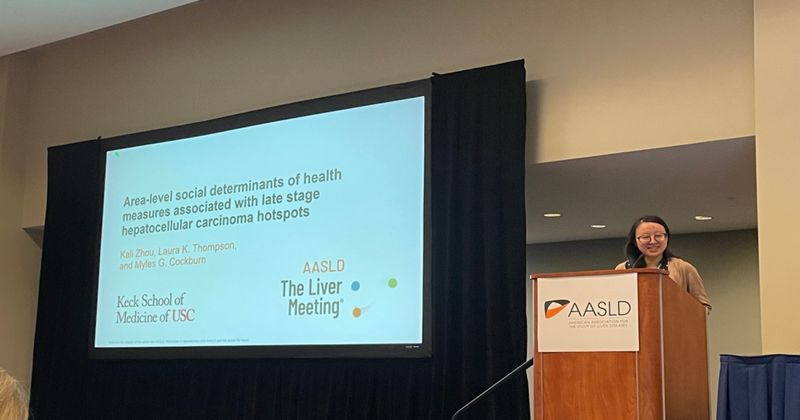Improved culturally competent care may boost early detection in ‘late-stage HCC hotspots’
Click Here to Manage Email Alerts
WASHINGTON — Increased culturally competent care and improved access to medical transport may improve early detection of hepatocellular carcinoma in patients who live in late-stage hotspots, according to researchers at The Liver Meeting.
“In our previous work, we have identified what I call late-stage HCC hotspots in Los Angeles County — we used something called ‘small area estimation’ to identify the areas in Los Angeles County with the highest density of late-stage HCC,” Kali Zhou, MD, MAS, a transplant hepatologist and assistant professor of clinical medicine at the University of Southern California Keck School of Medicine, said. “There was a total of 23 hotspots, which included 27% of all HCC cases over a 10-year period in Los Angeles County and about 30% of all late-stage cases.

“There was a differential in the rate of late-stage HCC inside and outside hotspots of about 10%, which in Los Angeles County equal over 1,000 absolute number of number of cases.”
Seeking to identify the specific area-level social determinants of health measures associated with residence, Zhou and colleagues identified 7,509 incident cases of HCC in the Los Angelese County Cancer Surveillance Program registry between 2008 and 2017.
According to analysis, 26.7% of patients lived in late-stage HCC hotspots, which were associated with a higher percentage of foreign-born patients and patients with limited English proficiency. These hotspots also had a higher percentage of individuals who identified as working class but a lower percentage of individuals with less than a high school education. The hotspots were, however, associated with a lower percentage of patients recently immigrated and who lived in linguistically isolated households.
While access to transportation was associated with hotspot residence, residential stability and a high level of residential segregation by race based on the Index of Dissimilarity was not.
Further, hotspots were associated with shorter commute time to HCC diagnostic facilities and specialty clinics, but a longer commute time to accredited ultrasound centers.
“There are a number of social determinants of health at the area level that seemed to be more important in their potential contribution to late-stage HCC,” Zhou said. “What we plan on doing next is prospectively evaluating the social determinants of health constructs at the patient level, as these area-level markers are surrogates, but they may not represent the individual patient experience.”
She continued, “These findings may not be generalizable to less urbanized populations, places with lower density and potentially less social economic diversity. Focusing on interventions, we’re going to be working to increase early detection of HCC in these groups providing language support and culturally competent care.”

